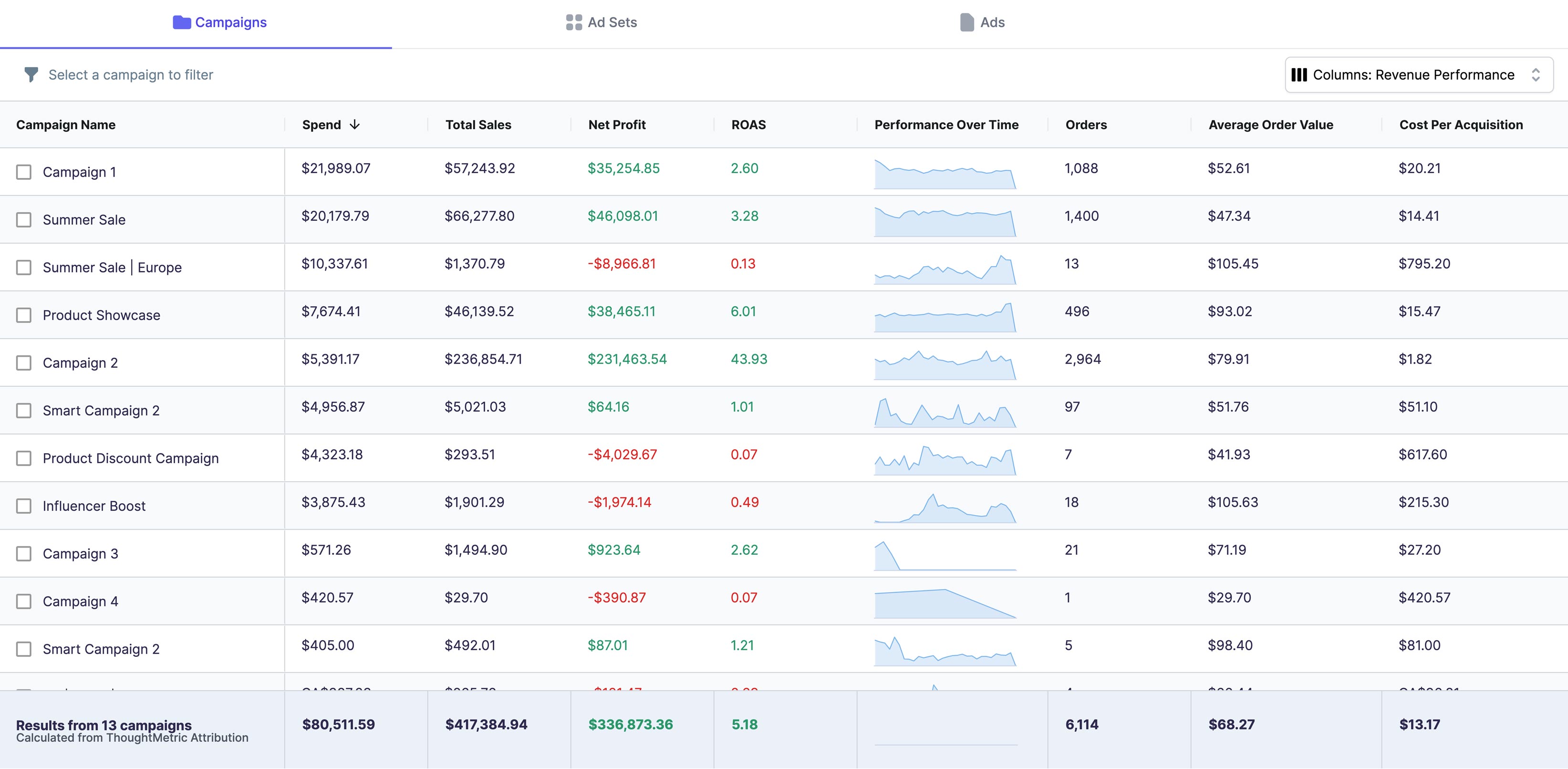Understanding Shopify’s Native Analytics Tool
As the default reporting tool within Shopify, Shopify Analytics gives merchants access to basic performance insights directly in their store dashboard. It includes standard sales metrics, pre-built reports, and simple customization options, making it a convenient option. It is included in a Shopify subscription, which starts at $29
How Accurate Is Shopify’s Marketing Performance Data?
While Shopify Analytics reliably captures sales data from the platform itself, its marketing attribution is far less accurate. Because it lacks server-side tagging and multi-touch attribution, Shopify cannot properly connect all the touchpoints in a customer journey. Conversions that happen after privacy-related tracking blocks, or following multiple clicks are often missed or misattributed. On top of that, Shopify Analytics defaults to last-click attribution, which credits only the final touchpoint before purchase. This oversimplifies performance reporting and makes it harder for brands to understand the true value of channels like paid social, email, or organic discovery. For example, imagine a shopper first clicks a Meta ad, then browses your site again through Google Shopping, and finally completes their order after opening an abandoned cart email. In Shopify Analytics, the sale would be fully credited to email, erasing the impact of the Facebook and Google touchpoints that helped drive the conversion. The result is data that looks clean on the surface but leaves major blind spots for decision-making.
What Are the Limitations of Viewing Historical Data in Shopify Analytics?
Shopify keeps order and sales data for the lifetime of your store, but the way you can access and analyze that history is limited. On lower-tier plans, many reports only let you view short windows like the last 30 or 90 days. Upgrading to Advanced Shopify or Plus unlocks more reports and longer time ranges, but even then, you can’t always run flexible year-over-year comparisons.
How Can ThoughtMetric Improve Attribution and Reporting for E-commerce Stores?
While Shopify Analytics provides a starting point, growing e-commerce brands need a more advanced solution. ThoughtMetric is designed to fill the gaps and give you a complete, accurate view of performance:
ThoughtMetric uses server-side event tracking, which avoids common issues with cookie loss, ad blockers, and privacy restrictions. This ensures your revenue attribution remains accurate, even when browser-side tracking fails.
Easy Time Comparisons
With a built-in time comparison feature, you can instantly measure performance across weeks, months, quarters, or years. This makes it simple to spot trends, benchmark campaigns, and track your progress against past results.
Many More Features
With ThoughtMetric, you move beyond partial reporting and gain accurate, long-term insights that guide sustainable growth.
Ready to move beyond Shopify Analytics? Book a ThoughtMetric demo and start tracking with confidence.
Frequently Asked Questions About Shopify Analytics
Not in terms of marketing performance. It falls short because it doesn’t support server-side tracking or multi-touch attribution.
No. Shopify Analytics defaults to last-click attribution, meaning only the final touchpoint before purchase gets credit. This misses the impact of earlier steps in the customer journey, like social ads or search.
Can Shopify Analytics replace advanced analytics tools?
Shopify Analytics is a good starting point for basic reporting, but growing e-commerce brands usually need more. Advanced tools like ThoughtMetric offer server-side tagging, unlimited historical data, and multi-touch attribution to provide a more complete picture of performance.
For brands that want accuracy and attribution, ThoughtMetric is a great alternative. It offers multiple attribution models, analytics (campaign, creative, customer, and product), server-side tracking, easy time comparisons, and more, making it easier to understand which channels actually drive growth.

.png)


.png)
